Today’s chosen theme is “Sustainable Options for Outdoor Furniture.” Step into a greener backyard where style meets stewardship, and small choices add up to lasting change. Explore materials, finishes, and real stories—then subscribe to keep the eco-inspiration coming to your inbox.
Earth-Friendly Materials That Stand Up to the Elements
FSC-certified teak, eucalyptus, or acacia offer natural durability, while reclaimed beams carry history and character. Finish with plant-based oils, pair with marine-grade fasteners, and let silver-gray patina tell its story. Comment if you’ve rescued lumber or found a local salvage yard treasure.

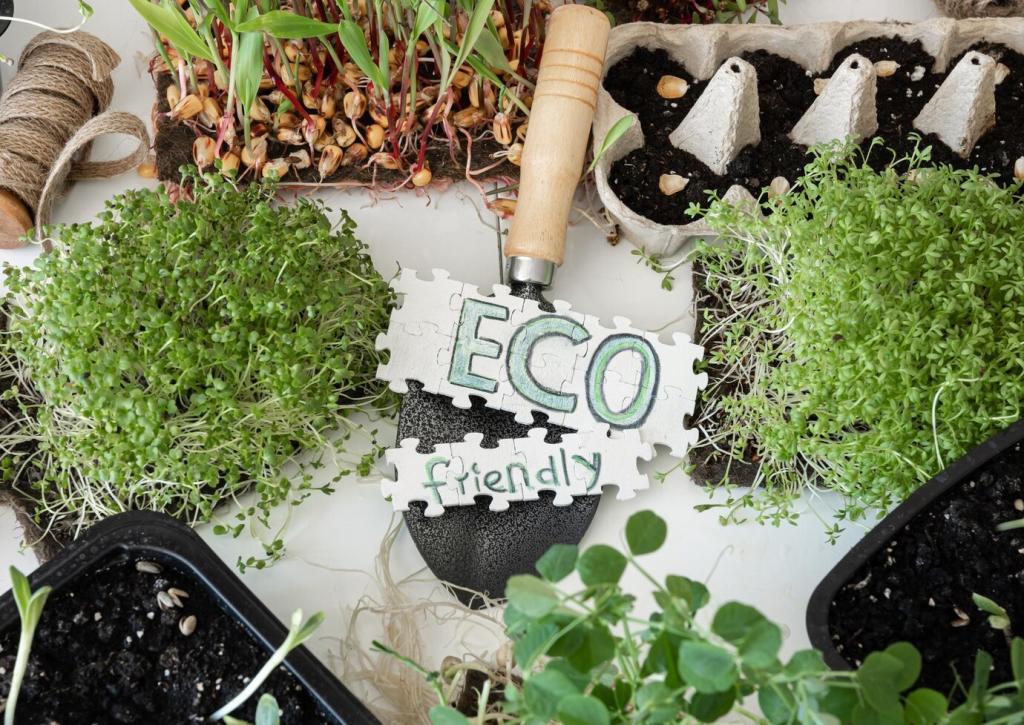
Earth-Friendly Materials That Stand Up to the Elements
HDPE boards, often made from recycled milk jugs, resist rot, splinters, and moisture. Choose UV-stabilized options, stainless hardware, and muted earth tones that hide scuffs. Heavier frames stay put in wind, making this a practical, low-maintenance, and genuinely circular outdoor choice.
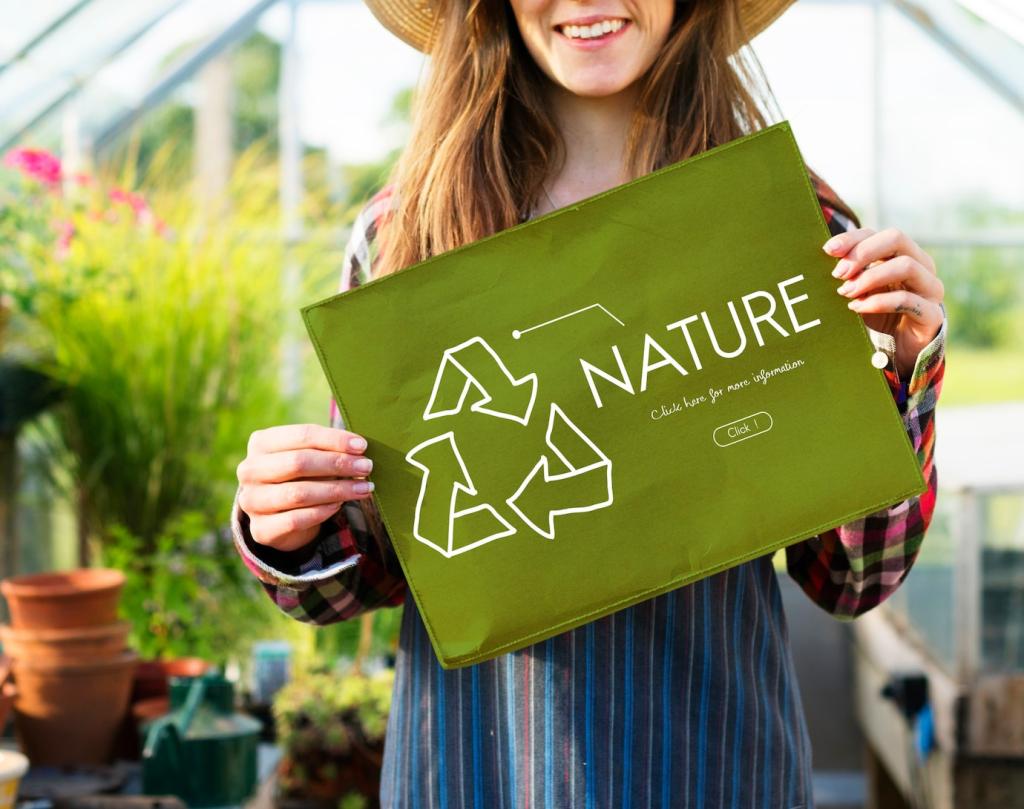


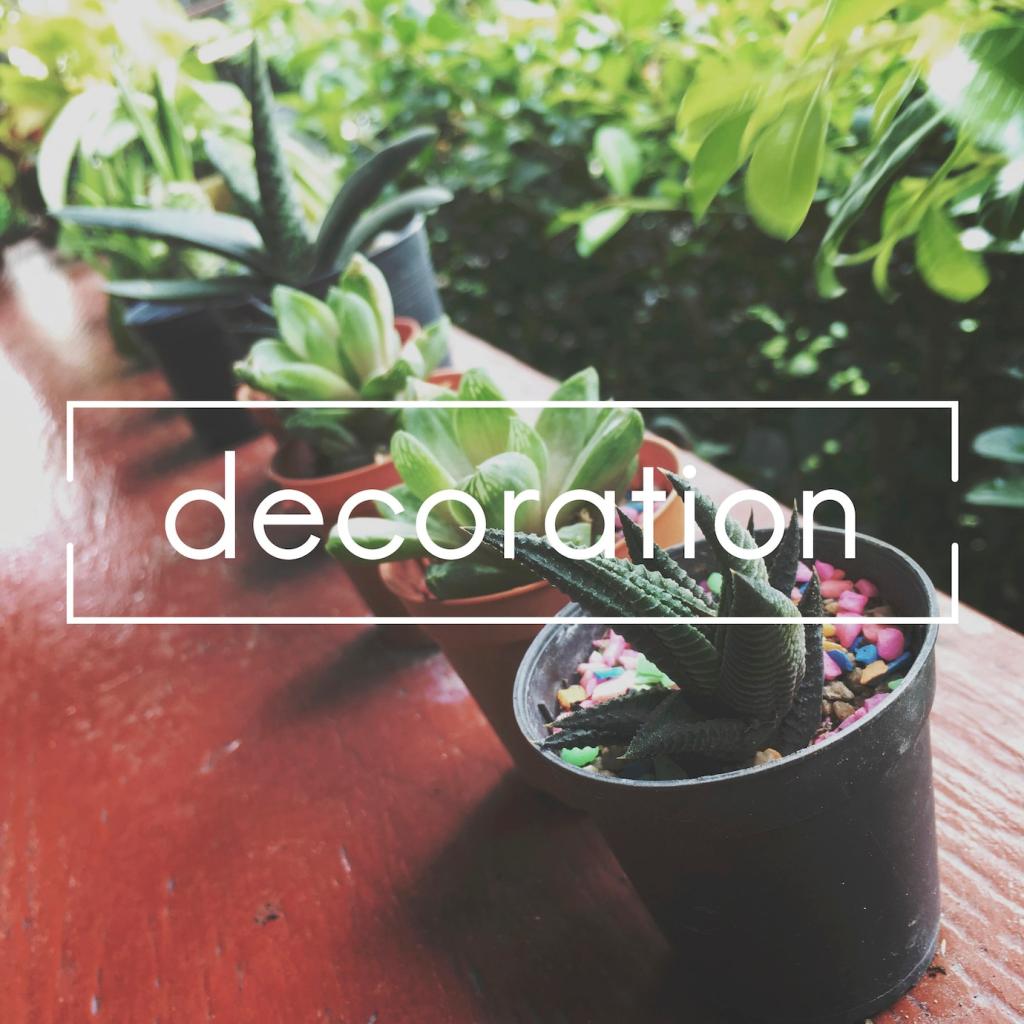
Labels That Matter: Certifications and Proof
FSC and PEFC confirm wood comes from responsibly managed forests with attention to biodiversity and workers’ rights. Verify Chain-of-Custody numbers, not just logos. Ask for invoices noting certified content percentages, so you know you’re supporting forests and furniture that lasts beyond one season.
Labels That Matter: Certifications and Proof
Cradle to Cradle signals circular thinking and safer chemistry. GREENGUARD addresses low emissions, handy for enclosed porches. OEKO-TEX screens textiles for harmful substances. When these labels appear together, you gain confidence in both health and durability. Which label gives you the most peace of mind?
Right Choice for Your Climate
In salty breezes, recycled HDPE and powder-coated aluminum resist corrosion, while teak handles moisture gracefully. Rinse frames after stormy days and choose closed-cell foam for cushions. Small habits against salt creep add years, avoiding premature replacement and the footprint that comes with it.
Desert patios demand UV-stable finishes, solution-dyed fabrics, and shade structures. Consider lighter colors that reflect heat and slatted designs for airflow. Schedule midday covers to prevent scorching. Your guests and your furniture will thank you, and your sustainability goals will stay comfortably on track.
Moisture cycles punish trapped water. Favor quick-drain cushions, open-weave seats, and capillary breaks under feet. Elevate pieces on breathable pads and store cushions dry. Even simple rubber glides prevent wicking, which preserves frames through winters and reduces the need to buy replacements.

Stories from the Patio: Wins with Sustainable Choices
One reader rescued two gray teak chairs from a curb, tightened joints, and applied tung oil. The transformation drew neighbors over for tea. Instead of landfill, the chairs hosted birthdays. Sustainable options for outdoor furniture sometimes begin with a Saturday and a steady brush.
On a sixth-floor balcony, recycled plastic stools and a foldable FSC table created a morning coffee ritual. No flaking paint, no splinters, just easy wiping. Space stayed calm, clutter-free, and durable. The owner swears that mindful materials made the city feel more breathable.
Volunteers built a bench from salvaged joists, sealing ends against moisture and engraving names of donors. It became a storytelling spot after harvest nights. Durable design, local wood, and shared effort turned thrifty pieces into a beloved gathering place with practically zero waste.
DIY and Upcycling That Look Polished
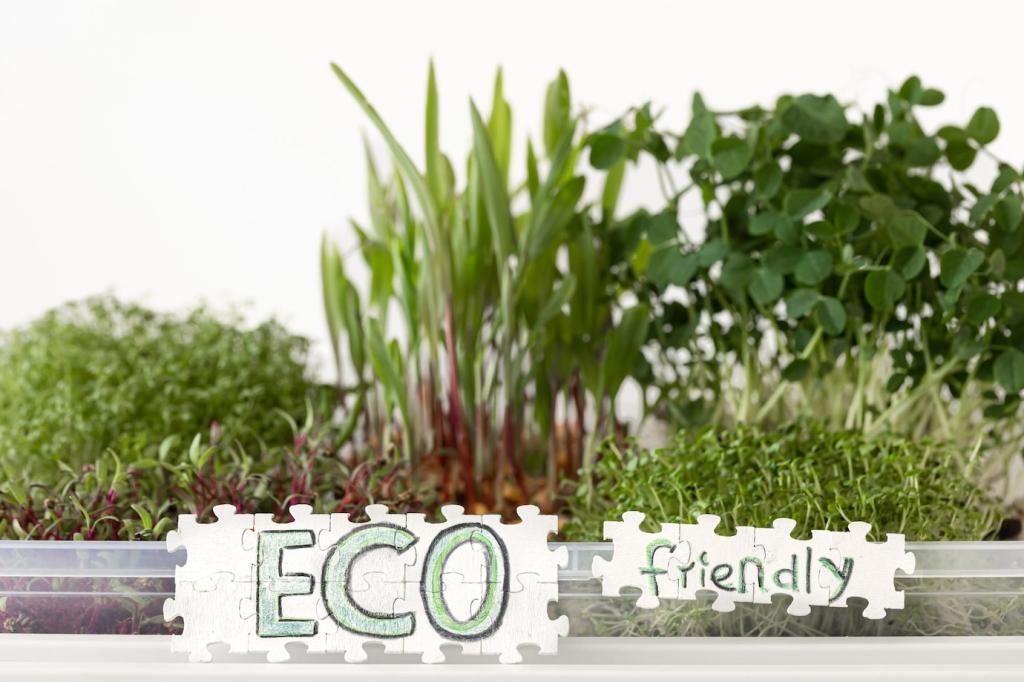
Pallet Myths and Better Paths
Skip unknown pallets that may carry chemicals or pests. Instead, source labeled, heat-treated pieces or choose salvaged decking boards. Sand edges, round corners, and finish with a low-VOC sealer. Add locking casters for mobility and you’ve made a flexible table from responsible materials.

A Salvaged Door Becomes a Bench
Cut an old solid door into seat and back, reinforce with recycled steel angle, and apply weatherproof paint. Use leftover decking offcuts as spacers to create drainage gaps. This weekend build saves money, looks custom, and keeps bulky lumber out of the waste stream.

Refreshing Fabrics the Responsible Way
Recover cushions with recycled-content canvas, choose UV-stable thread, and add concealed zippers for easy washing. Prewash fabrics to reduce shrinkage and plan panel cuts to minimize scraps. Donate offcuts to craft groups. Share your colorways, and we’ll compile a palette guide for subscribers.
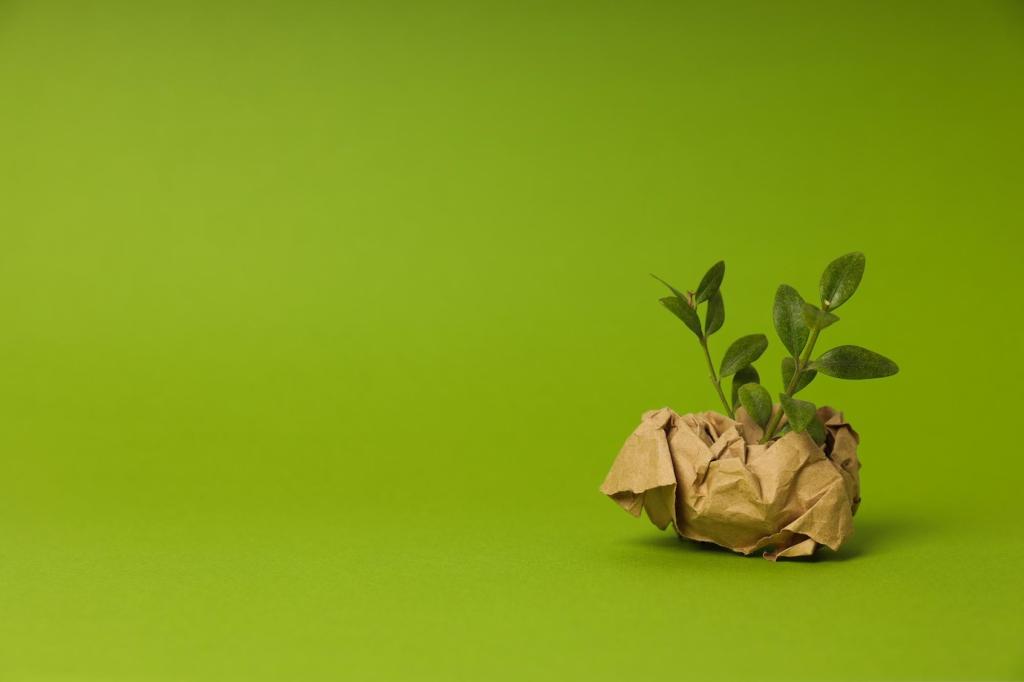
Each spring, tighten hardware, touch up finishes, and check feet for wear. In autumn, clean thoroughly and remove trapped leaves. A consistent hour per season often doubles service life, keeping your patio beautiful while reducing the environmental cost of frequent replacements.
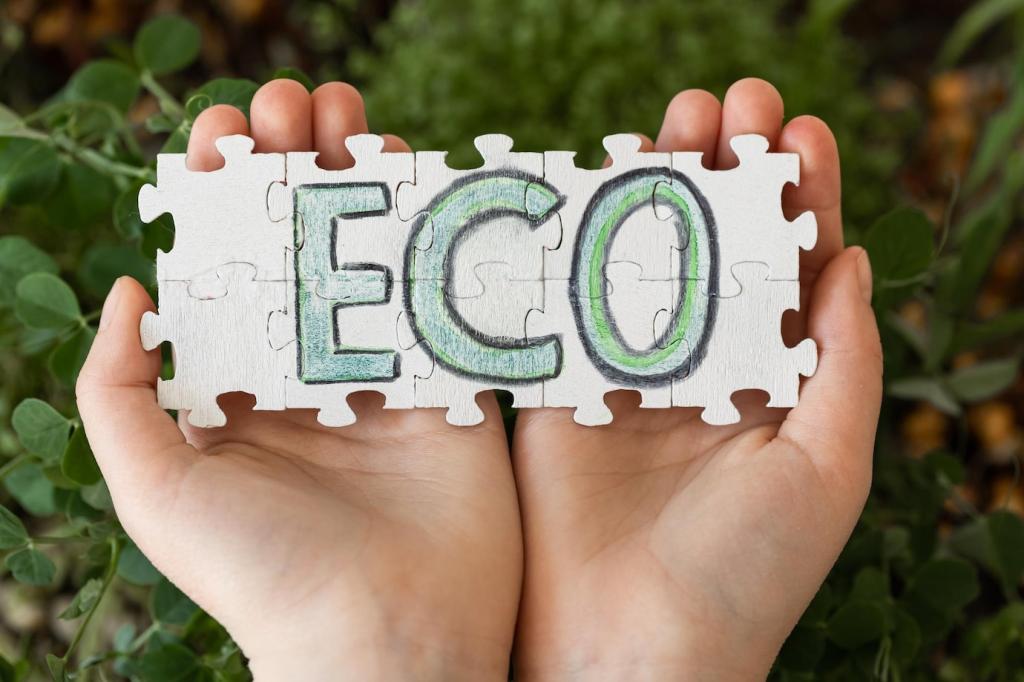
Use mild soap, soft brushes, and a hose instead of power washers that can erode finishes. Spot-treat stains quickly and avoid bleach unless manufacturer-approved. Good cleaning preserves coatings, maintains color, and protects fabrics, ensuring your sustainable selections look inviting year after year.
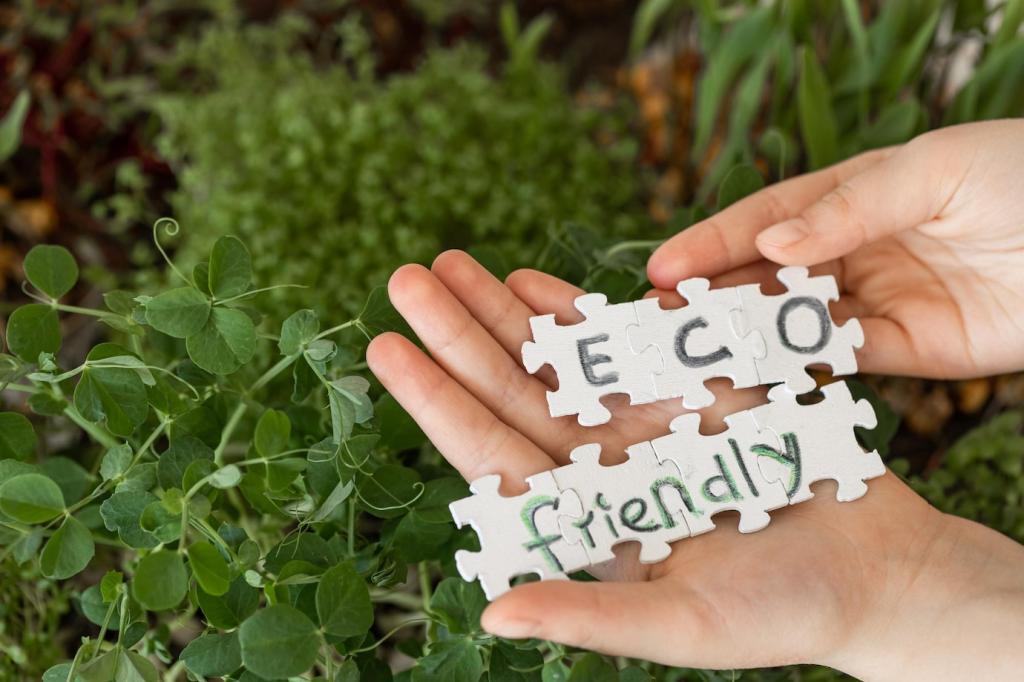
Breathable, well-fitted covers prevent mildew and abrasion. Elevate legs off damp ground and store cushions indoors when storms roll in. If space is tight, choose foldable or stackable designs. Small storage strategies keep materials sound, saving money and carbon by delaying replacement cycles.
Join our mailing list
